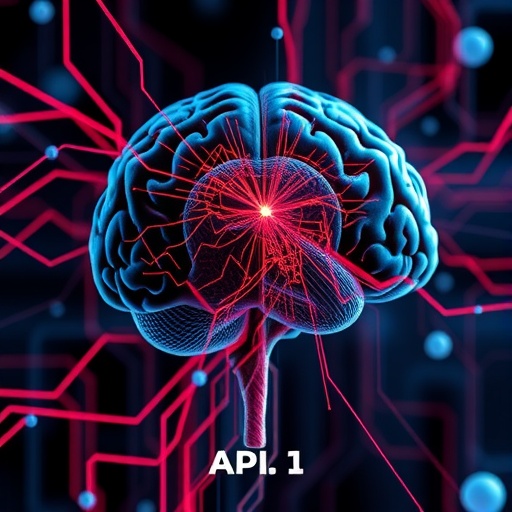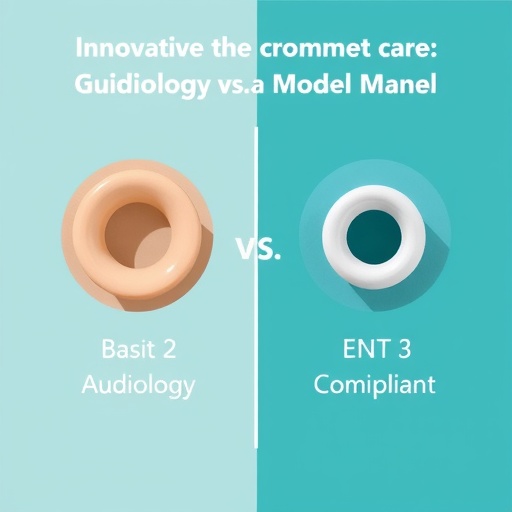
In recent years, the boundaries between neurology and artificial intelligence have blurred, giving rise to revolutionary diagnostic tools that promise earlier and more precise disease classification. A striking example of this convergence appears in the latest groundbreaking study by Zhang, Zhou, Wang, and colleagues, published in npj Parkinson’s Disease in 2025. Their research tackles one of the most vexing clinical challenges in movement disorders: differentiating Parkinsonian tremor from essential tremor based solely on brain morphology. This pioneering work represents a monumental step forward in harnessing morphological brain networks through AI-empowered neuroimaging analysis, shedding new light on subtle yet critical neuropathological signatures underlying these frequently conflated conditions.
Parkinsonian tremor and essential tremor each present as rhythmic, involuntary movements, yet they stem from distinct pathological mechanisms with vastly different therapeutic and prognostic implications. Traditionally, clinicians have relied on clinical symptomatology combined with electrophysiological studies and, in some cases, trial-based pharmacological responses to distinguish between them. Nonetheless, this diagnostic process is inherently subjective and prone to misclassification. The crux of Zhang et al.’s contribution lies not only in the application of artificial intelligence to neuroimaging data but also in deciphering nuanced morphological brain network differences that are invisible through conventional imaging interpretation.
Employing a sophisticated AI algorithm that integrates deep learning with graph theory, the researchers analyzed high-resolution magnetic resonance imaging (MRI) scans from cohorts of patients diagnosed with either Parkinsonian tremor or essential tremor. Their model meticulously quantified variations in morphological brain networks—these represent the complex interconnectedness of brain regions as inferred from structural MRI data. Unlike previous studies limited to volumetric or regional cortical thickness metrics, this team innovatively mapped entire brain network architectures, leveraging the AI’s capacity to detect subtle topological alterations that escape human assessment.
.adsslot_d64yc8lJwB{width:728px !important;height:90px !important;}
@media(max-width:1199px){ .adsslot_d64yc8lJwB{width:468px !important;height:60px !important;}
}
@media(max-width:767px){ .adsslot_d64yc8lJwB{width:320px !important;height:50px !important;}
}
ADVERTISEMENT
One of the most compelling outcomes of this study was the identification of distinctive divergence patterns in the morphological brain networks of Parkinsonian versus essential tremor patients. The AI model highlighted specific subcortical and cerebellar network disruptions more prevalent in Parkinsonian tremor cases, in contrast to pronounced cortical connectivity changes including sensorimotor areas in essential tremor subjects. These distinctions provide a rich morphological signature that correlates with the underlying disease pathophysiology, reflecting the differing neurological substrates implicated in each tremor type.
In terms of diagnostic performance, the AI-based classification model achieved remarkable accuracy, sensitivity, and specificity metrics, outperforming existing clinical and imaging standards. This suggests that the integration of morphological brain network analyses via artificial intelligence may significantly enhance early and differential diagnosis, potentially leading to tailored treatment strategies that can halt or ameliorate disease progression. The clinical translation of these findings could reduce the current rates of misdiagnosis and inappropriate therapy selection that impact patient outcomes worldwide.
Beyond diagnostic precision, the study offers profound implications for the understanding of disease mechanisms in movement disorders. By illuminating the brain’s morphological network architecture specific to tremor phenotypes, the researchers open avenues for exploring how neurodegeneration and compensatory neural reorganization manifest spatially and functionally. This knowledge paves the way for biomarker development that can serve as surrogate endpoints in clinical trials or as indicators for novel therapeutic targets.
The methodological rigor of the study deserves particular attention. The authors utilized advanced preprocessing pipelines to harmonize MRI data, mitigating scanner variability and subject motion artifacts, thus ensuring robust input for AI analysis. Their multi-layered neural network model was trained and validated using rigorous cross-validation techniques and external datasets to confirm generalizability across populations. Such methodological sophistication guarantees that their findings are not artifacts of overfitting or sample bias but rather represent reproducible neurobiological phenomena.
This work also exemplifies a new era where artificial intelligence is not merely a tool for pattern recognition but an investigative instrument capable of hypothesis generation about brain pathology. By coupling AI with neuroimaging, researchers are now able to probe the connectomic landscape with granularity previously unattainable, providing a rich framework to dissect the structural underpinnings of complex neurological disorders. Consequently, this research paradigm fosters interdisciplinary innovation, blending computer science, neurobiology, and clinical neurology into cohesive investigative frameworks.
The implications for patient care extend beyond diagnosis into personalized medicine. Understanding the morphological networks specific to tremor types can inform neuromodulation interventions, such as deep brain stimulation targeting precise nodes within disrupted networks. Tailoring such interventions according to AI-informed morphological profiles promises enhanced efficacy and reduced side effects. Additionally, longitudinal application of this AI methodology could monitor disease progression or therapeutic response non-invasively, offering dynamic imaging biomarkers for real-world clinical use.
Furthermore, this approach holds promise for expanding differential diagnostic capabilities across a spectrum of neurodegenerative and movement disorders. Similar AI-augmented morphological network analyses could be applied to distinguish Parkinson’s disease from atypical parkinsonian syndromes or to identify early-stage neurodegeneration prior to clinical symptom onset. As datasets grow and AI models become increasingly refined, the potential to revolutionize neurological diagnostics becomes ever more tangible.
Nevertheless, the study acknowledges inherent limitations and challenges that accompany AI-based neuroimaging research. The reliance on high-quality imaging and extensive computational resources can impose constraints in some clinical settings. Additionally, the black-box nature of deep learning techniques necessitates continued emphasis on interpretability and explainability to foster clinician trust and regulatory approval. The authors advocate for ongoing collaborations between AI developers, neuroscientists, and clinicians to enhance model transparency and clinical integration.
In conclusion, Zhang and colleagues have propelled the field of movement disorder diagnostics into a transformative epoch. By unraveling the morphological brain network disparities between Parkinsonian tremor and essential tremor through a cutting-edge artificial intelligence framework, they have delivered a blueprint for precision medicine in neurology. Their findings underscore the immense power of AI to decode complex brain morphologies and translate these insights into actionable clinical tools that hold the promise of improving diagnosis, treatment, and ultimately patient lives.
As this research catalyzes further exploration, it highlights the growing imperative to integrate AI within routine neurological practice, embracing a future where machine intelligence and human expertise synergize to conquer the enigmas of the brain. For patients burdened by tremor disorders, this innovation offers new hope—a future where the ambiguity of diagnosis yields to clarity, and tailored care transforms prognosis. The marriage of morphological network neuroscience and AI thus stands as a testament to the boundless possibilities unlocked when technology meets tenacity.
Subject of Research: Differentiating Parkinsonian tremor from essential tremor through morphological brain network analysis using artificial intelligence.
Article Title: Unraveling morphological brain network disparities Parkinsonian tremor from essential tremor: an artificial intelligence approach for clinical differentiation.
Article References:
Zhang, M., Zhou, S., Wang, H. et al. Unraveling morphological brain network disparities Parkinsonian tremor from essential tremor: an artificial intelligence approach for clinical differentiation. npj Parkinsons Dis. 11, 253 (2025). https://doi.org/10.1038/s41531-025-01107-8
Image Credits: AI Generated
Tags: AI in neurologyartificial intelligence in disease classificationbrain network analysis for tremorsclinical challenges in tremor differentiationdifferentiating Parkinsonian and essential tremorsearly detection of tremor disordersmachine learning applications in neurologymorphological brain networks in tremor diagnosisneuroimaging advancements in movement disordersneuropathological signatures in tremorsobjective diagnostic tools for movement disordersParkinson’s disease research breakthroughs





